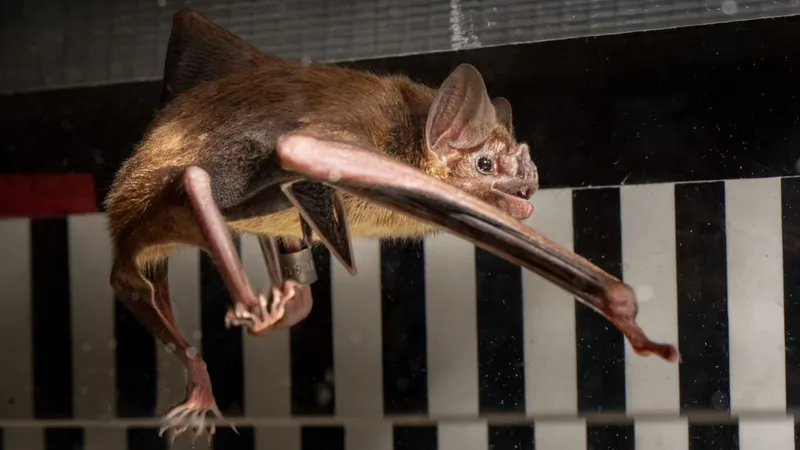
Unraveling Turtles’ Genetic Mystery: A Groundbreaking Study Reveals Unique Chromatin Folding
2024-11-11
Author: Wei Ling
Introduction
A groundbreaking study from Iowa State University is shedding light on the fascinating world of turtle genetics, revealing unique chromatin arrangements that might change the way we understand evolution and gene regulation across species. The research team, led by Nicole Valenzuela, a prominent professor of ecology, evolution, and organismal biology, has uncovered remarkable insights into how DNA structures in turtles could have significant implications not just for our comprehension of these reptiles, but also for potential biomedical advancements.
Chromatin Complexity in DNA
The study delves into the complexities of DNA within animal cells. As cells grow and divide, the DNA becomes organized into structures called chromatin, which play a crucial role in gene regulation based on their 3D configurations. New findings suggest that where and how chromatin folds can activate certain genes while silencing others, a fundamental aspect that influences an organism's biology and adaptability.
Unique Chromatin Arrangement in Turtles
In an astonishing twist, the research indicates that turtles possess a chromatin arrangement not observed in other animal families, such as mammals and birds. Unlike humans, where chromosomes maintain separate territories, some animals, including marsupials, allow their chromosomes to cluster, enabling their centromeres to interact. In contrast, turtles exhibit an alignment of both their telomeres and centromeres, hinting at a potential ancestral condition for amniotes—the group that gave rise to mammals, birds, and reptiles.
Implications for Evolutionary Biology and Medicine
The implications of this research could extend far beyond evolutionary biology. Turtles are known for their remarkable survival skills; for instance, specific species can endure extended periods without oxygen. Understanding the genetic underpinnings of such capabilities could revolutionize treatment approaches for medical conditions like strokes. Similarly, the turtle's resistance to extreme cold poses intriguing possibilities for enhancing cryogenic preservation methods in human medicine.
Future Research Directions
Valenzuela emphasizes the research group's goal to broaden their understanding of turtle genomes. Future projects aim to include even more turtle species and to explore genetic architecture across reptiles, including comparing turtles to crocodiles, lizards, and snakes. This effort targets not only a more profound comprehension of genetic variations but also seeks to uncover evolutionary patterns that have shaped gene regulation in various species.
Conservation and Adaptation
The research is not merely academic—it also aims to inform conservation strategies. By comprehending how turtles' chromatin structures react to environmental changes, scientists hope to predict how these reptiles might adapt to ongoing climate challenges. Additionally, advanced methodologies in genetic mapping promise to provide deeper insights into the relationship between genotype and phenotype, facilitating a comprehensive understanding of biological diversity and resilience.
Conclusion
As researchers continue their exploration of turtle genetics, they reveal a world of unexpected connections and exciting possibilities that could shape the future of evolutionary biology and medicine. Stay tuned—this is just the beginning of a riveting journey into the genomic secrets of one of nature's oldest creatures!



 Brasil (PT)
Brasil (PT)
 Canada (EN)
Canada (EN)
 Chile (ES)
Chile (ES)
 España (ES)
España (ES)
 France (FR)
France (FR)
 Hong Kong (EN)
Hong Kong (EN)
 Italia (IT)
Italia (IT)
 日本 (JA)
日本 (JA)
 Magyarország (HU)
Magyarország (HU)
 Norge (NO)
Norge (NO)
 Polska (PL)
Polska (PL)
 Schweiz (DE)
Schweiz (DE)
 Singapore (EN)
Singapore (EN)
 Sverige (SV)
Sverige (SV)
 Suomi (FI)
Suomi (FI)
 Türkiye (TR)
Türkiye (TR)